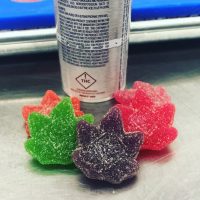Regardless of their size, all consumer package brands spend a significant amount of money and resources on packaging to attract consumers’ attention. We are all very visually oriented and gravitate to items that pique our interests. Cannabis brands are no exception when it comes to branding their products. Packaging plays a big part in carrying their brand forward and standing out on the dispensary shelves. When I was in Las Vegas at a CBD tradeshow in early 2020, I visited a dispensary, and it was beautiful. I remember commenting to a colleague that was with me how spectacular the product packaging was in the glass cases. One had unique artwork on each different product they offered, and it was indeed art. Yes, I did purchase this one that pulled me in.
The cannabis industry in the United States presents a challenge to brands because there is no overall federal guidance for packaging. Each state is controlling the cannabis legislation and, with it, the packaging guidelines. So multi-state operators (MSOs) have to manage each state as a separate entity and abide by the packaging regulations, which is not very efficient and adds a cost burden. As the industry matures and becomes federally legal across the country, packaging regulations will be easier to implement.

Image: UK Home Office, Flickr
Let’s take a look at counterfeit products across all product categories. There is a significant global problem with counterfeits, as articulated by the below statistics.
The total global trade in fakes is estimated at around $4.5 trillion.
Fake luxury merchandise accounts for 60% to 70% of that amount, ahead of pharmaceuticals, entertainment products and representing perhaps a quarter of the estimated $1.2 trillion total trade in luxury goods.
Digital plays a big role in this and perhaps 40% of the sales in luxury fakes take place online.
Customs and Border Patrol confiscated $1.3 billion worth of counterfeit goods in the U.S. for Fiscal Year 2020. (The value of 2020’s seizures are actually down compared to the $1.5 billion worth of counterfeit goods seized by CBP in 2019).
Unfortunately, the figures above are concerning, and the cannabis industry will face the same counterfeit issues that will add to these stats in the future. What can be done to help fight the problem and alleviate the pain for cannabis brands? Smart technology.
The trend towards “smart technology” varies by sector, but the underlying concept involves building levels of technology systems designed to impede or limit the highly sophisticated counterfeiter from replicating or replacing products. These levels typically include a forensic level control on the product, digital systems to track the material and customer facing systems to articulate the underlying value to the consumer.
Building these levels of smart technology into cannabis-products and packaging allows consumers to authenticate real versus fake, and in the case often in cannabis, legal versus illegal. Molecular technology is one forensic level of control option that can be used as a unique identifier for product authentication. Each brand would get its unique identifier to apply to the raw materials that make up its product, such as oil or an isolate. Then a sample can be tested at the origin point and subsequent nodes in the supply chain using a remote testing device. All the digital data is captured in a secure cloud database for traceability and transparency to the end consumer, to show them the authenticity of the product they are consuming. The same molecular technology can be applied to the ink or varnish for packaging and labels. A great application to help combat counterfeits and product diversion across the globe.

Another engaging platform is called StrainSecure by TruTrace Technologies. Their SAAS platform allows cannabis manufacturers to track all their product batches and SKUs tied to a blockchain. It also facilitates the interaction between the manufacturer and third-party testing facilities to conduct product testing and reporting. The data is captured within the platform, and with easy access dashboard views, it provides the insights to authenticate products at any time.
A company out of Australia called Laava is producing a product called Smart Fingerprints. It’s the next evolution of QR codes. The Smart Fingerprints can be applied to each package, providing a unique identifier that consumers can read with a mobile phone application. The consumer is provided with information concerning the product’s authenticity and any additional information the brand wants to share with the user. Smart Fingerprints are a great example of customer engagement at the point of activity that is secure.
The above three solutions show the availability of advanced technologies the cannabis industry can implement on its packaging and products to ensure authentic and safe products are sold to consumers. It provides consumers with vital information and insights about products so they can make informed buying decisions. There is no one silver bullet solution that provides all the answers. As with every high value product, counterfeiters will work to create near duplicate versions of the original until it becomes unsustainable to do so. It will take a technology ecosystem to seamlessly connect and provide actuate and timely information between supply chain partners and ultimately the end consumer. As the US works to separate the legal from illegal production for both the adult use and medical supply of cannabis, the looming challenge will be on protecting and communicating authenticity, packaging will be the first step in this.





